Last Chance to Catch NYC's Holiday Notalgia Train
We met the voices of the NYC subway on our nostalgia ride this weekend!


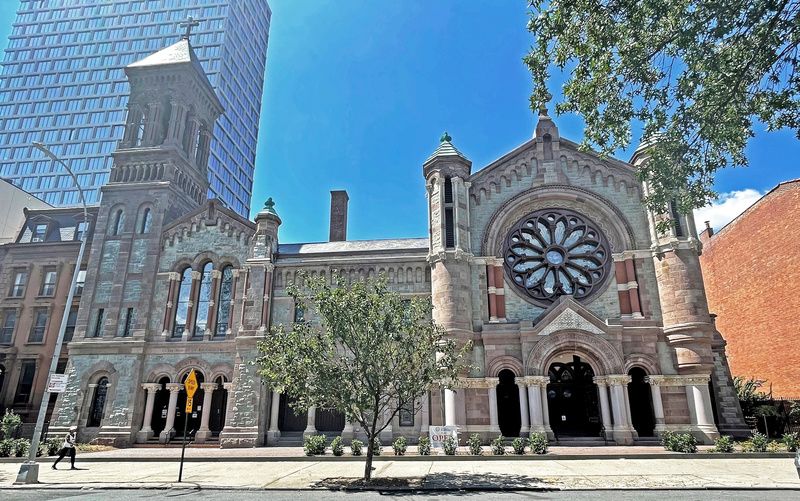
Winners of the “Oscars of Preservation” have been announced and they feature a wide variety of historic structures across New York City. The Lucy G. Moses Preservation Award is the highest honor for excellence in preservation awarded by The New York Landmarks Conservancy. Every year the Conservancy recognizes outstanding contributions to the city from individuals, organizations, and building owners. Here, we take a look at the winners of this year’s preservation award, including a Manhattan armory, a historic lighthouse, stunning churches, and more!
In addition to the buildings being honored, Laurie Beckelman, former Chair of the New York City Landmarks Preservation Commission, will receive the 2023 Public Leadership in Preservation Award. John J. (Jack) Kerr, Jr., attorney, will receive the Preservation Leadership Award in honor of his role in preservation’s most significant legal decisions, and for his work with many nonprofit organizations, including the Conservancy, where he served as Board Chair. Winners will be recognized at the Awards Ceremony on April 19th at 6:00 pm at Saint Bartholomew’s Church in Manhattan. You can register for tickets to attend the event here.

In 1872, the Blackwell’s Island Lighthouse was constructed at the northern tip of the island now known as Roosevelt Island. The beacon was put in place to aid ships navigating the treacherous rocky waters of the East River. It was designed by James Renwick, Jr., architect of the Smallpox Hospital on the island. The 50-foot tall, octagonal lighthouse is made of stone quarried right from the island by inmates of the Penitentiary which once stood on Blackwell’s.
The lighthouse ceased operations in the 1940s. Roosevelt Island Operating Corporation, a New York State Authority, led the restoration of the lighthouse, which started in 2021. Work done to the lighthouse entailed repairing the gneiss stone façade, replacing the lantern, and adding colorful architectural lighting. Discover more historic lighthouses of New York here!
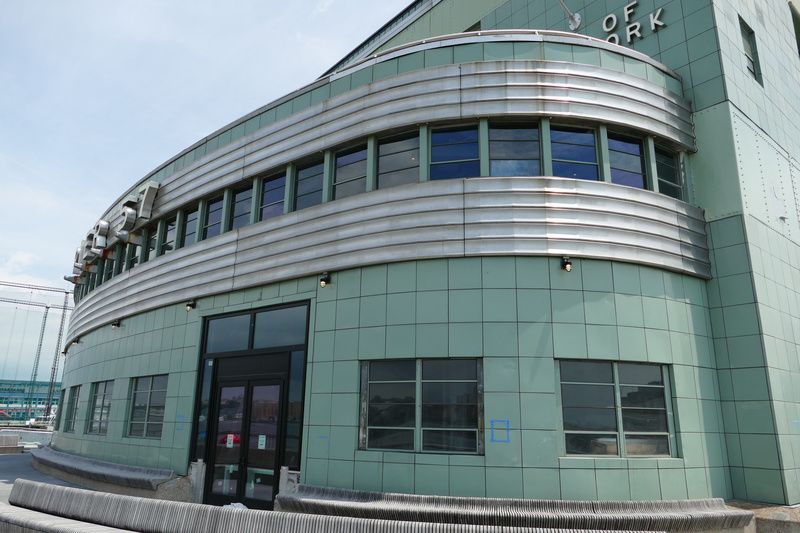
Pier 57 has been shuttered for twenty years but will re-open this weekend! The pier that stands today was built in 1952 as a replacement for the terminal of the Grace Line which had burnt down in 1947. It was later used as a Hudson Pier Depot for the New York City Transit Authority, before closing in 2003.
Now, the pier building has been renovated as a mixed-use waterfront property that houses a new public rooftop park, office space, a performance venue, a food market, classrooms, and community spaces. The restoration has been a collaborative effort between the Hudson River Park Trust, RXR, Young Woo & Associates, and the pier’s tenants, Google, City Winery, Jamestown, and the James Beard Foundation. When the new facilities open in April 2023, it will mark the first time the general public will get to make use of this once-vacant structure.

The New York State Pavilion is one of the few structures that survived from the 1964-65 World’s Fair at Flushing Meadows-Corona Park in Queens. Designed by noted architect Philip Johnson, there was much debate over what to do with the pavilion once the fair had closed and it was at risk of demolition.
The New York State Pavilion project is being recognized for the work that has recently gone into preserving the existing structures of the pavilion including the Tent of Tomorrow and the Astro View Observation Towers. The $24 million restoration project has included the stabilization of the towers and the installation of architectural lighting at the towers and Tent of Tomorrow. These improvements are intended to immediately enhance the Pavilion now, to make future maintenance and access easier, and to encourage funding for future projects.
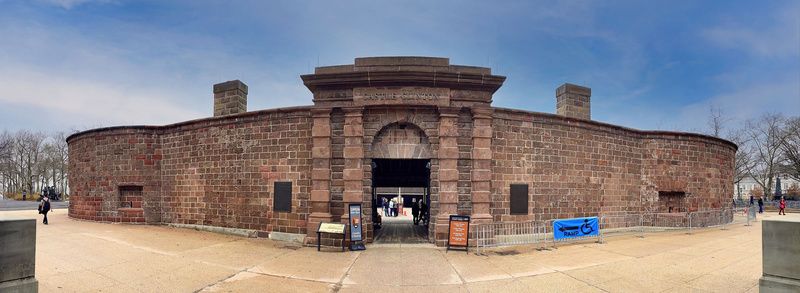
Castle Clinton is a prime example of successful adaptive reuse in New York City. Since it was originally constructed as Fort Clinton in 1811, the structure has evolved with the changing city around it. Its original purpose was to defend from British invasion in 1812, and in 1855 it became the nation’s first federal immigration station, processing over 8 million people. It has also served as a beer garden, theater, and public aquarium.
Today, Castle Clinton serves as the National Park Service (NPS) ticket office for the Statue of Liberty and Ellis Island. More than 3 million visitors pass through annually. The preservation project being awarded has carefully restored the fort’s historic brownstone walls, fortifying the Castle for generations to come.

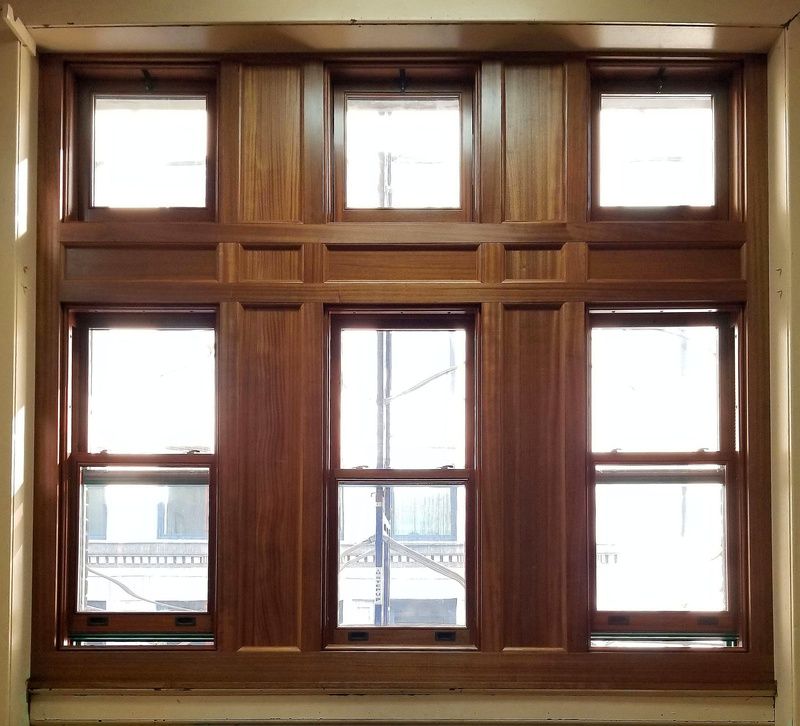
The 69th Regiment Armory still functions as an active military facility, which made preservation work challenging. Despite this obstacle, over 200 original dilapidated and unusable wood windows have been restored. All new fenestration that precisely matches the historic windows and meets current energy efficiency standards have been installed.
The restoration project also had the added requirement of meeting Department of Defense Anti-Terrorism standards for blast resistance. Discover more of New York City’s historic armories!
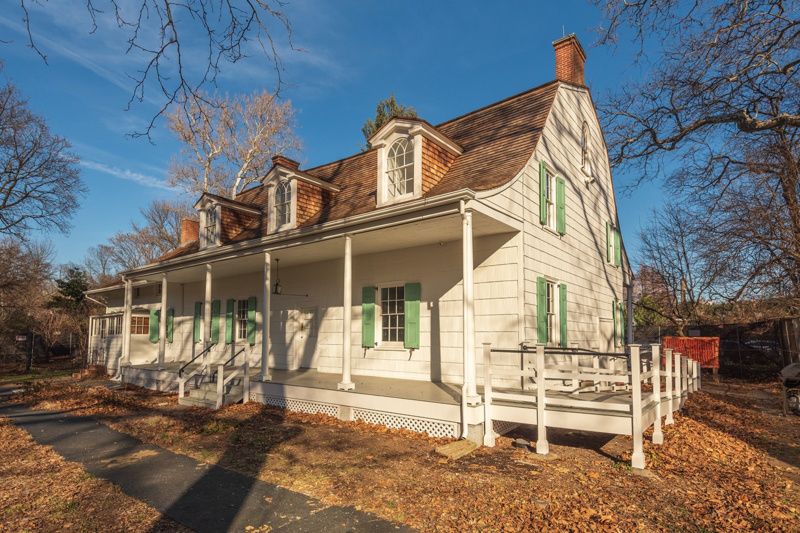
The Lefferts Historic House is one of the oldest buildings in Brooklyn. Located within Prospect Park, the 18th-century farmhouse belonged to the Lefferts family, one of the wealthiest and most influential families in Brooklyn. In 1917, the John Leffert’s estate gifted the home to the city of New York under the condition that it be moved onto city property to be protected and preserved.
Today, the home is operated by the Prospect Park Alliance in partnership with the Historic House Trust. The building will be honored with a preservation award for the $2.5 million restoration project that replaced the cedar shingle roof and repaired the façades, windows, and porch. The project was funded by the Speaker and the Brooklyn Delegation of the New York City Council.
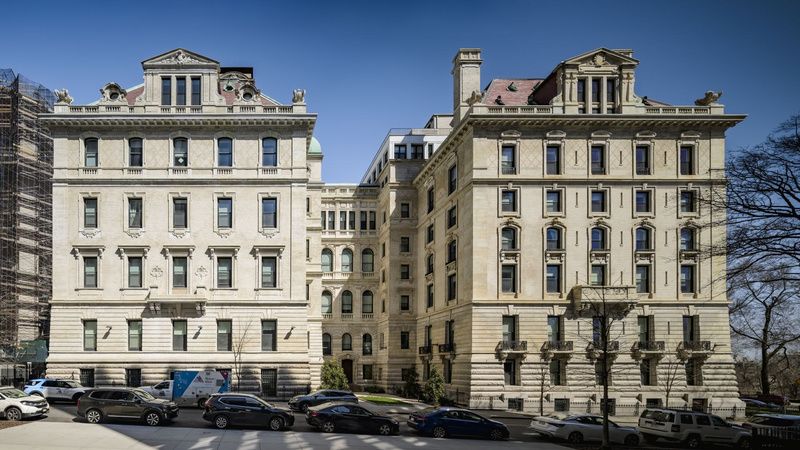
St. Luke’s Hospital Pavilions will receive the Lucy G. Moses Preservation Award for a successful adaptive reuse project which has transformed the abandoned 19th-century hospital into a high-end residential complex. Designed by Ernest Flagg, a Beaux-Arts architect known for the Singer Building, the hospital complex sits just north of the Cathedral of St. John the Divine in Morningside Heights. Over the years, some of the original nine pavilions have been demolished, while others have been preserved. The Plant and Scrymser Pavilions for Private Patients became designated New York City Landmarks in 2002.
Four remaining pavilions make up the new residential complex. The restoration work that has been completed on these pavilions has stabilized and restored the elaborate brick and granite façade, slate roofs, and copper trim. Owner Delshah Capital made use of preservation tax credits to make the restoration possible. Thanks to the owner’s vision and financial planning, this old historic building has found a new use in the modern city.

The Asia Art Archive in America is housed inside a repurposed carriage house at 23 Cranberry Street in the historic neighborhood of Brooklyn Heights. The restoration project honored converted the building into a public space for the study of post-war Asian Art.
In the process of transforming this former carriage house into a public space, the lower levels were turned into offices and rooms for public programs, while the upper floors have been converted into residences. The legacy of the building’s former owner, sculptor John Rhoden, has been incorporated into the current iteration through pieces from his personal collection. Some of Rhoden’s items that are featured in the new design include a Buddhist prayer table, a teak railroad tie from Indonesia, and pieces of hardware and cast iron, brass, and bronze.

After two decades of being obscured by a sidewalk bridge, the restoration work at the Church of Saint Mary the Virgin can finally be seen and appreciated. The Lucy G. Moses Award-winning project has revealed a newly restored limestone and brick façade. Restored limestone statues by John Massey Rhind are out in the open once again on 46th Street.
Known as Smoky Mary’s, for the generous incense used in services, the church was designed by Napoleon LeBrun and Sons in the French Gothic Revival style. Completed in 1895, it was the first building in the world to use steel frame construction, eliminating the need for flying buttress supports and permitting a large interior on a narrow lot.
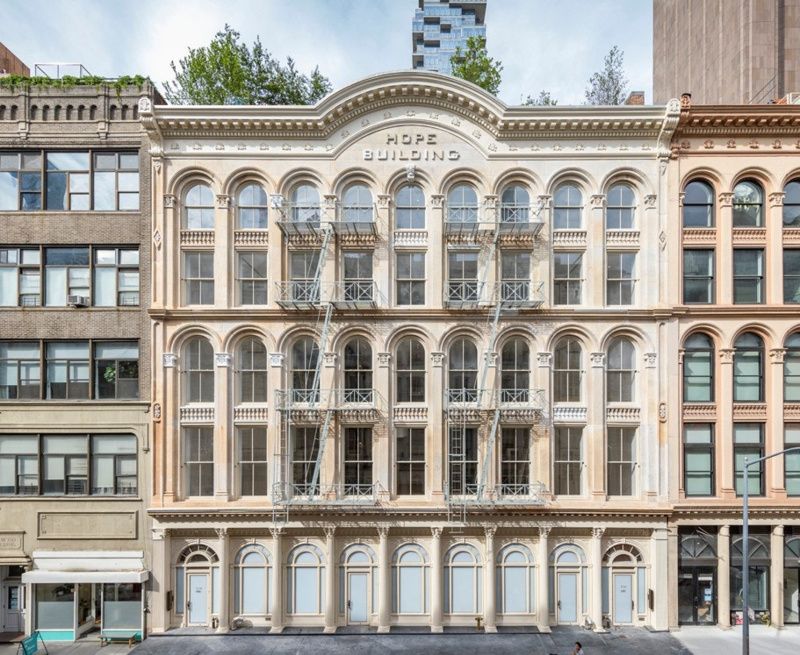
Restoration work on 131 Duane Street in the Tribeca South Historic District revealed the building’s historic “Hope Building” sign. A team of preservation professionals rediscovered the sign while restoring the structure’s original marble, brick, and cast iron façade, paying careful attention to the ornate architectural details.
Now a mixed-use building with lofts, retail and amenity spaces, and a two-story rooftop penthouse, the building was originally constructed in 1863 by Thomas Hope. It housed a variety of dry goods companies and shoe manufacturers. The upper floors were converted for residential use in the 1970s.

The Church of St. Luke and St. Matthew is made up of seven different stone types to achieve its unique polychrome design. Completed in 1891, the church exemplifies the Italian Romanesque Revival style.
This restoration project which will receive the Lucy G. Moses Preservation Award has stabilized and restored the monumental façade and stained glass, and repaired a hole in the roof. The project was funded in tandem with zoning changes to a nearby new development.
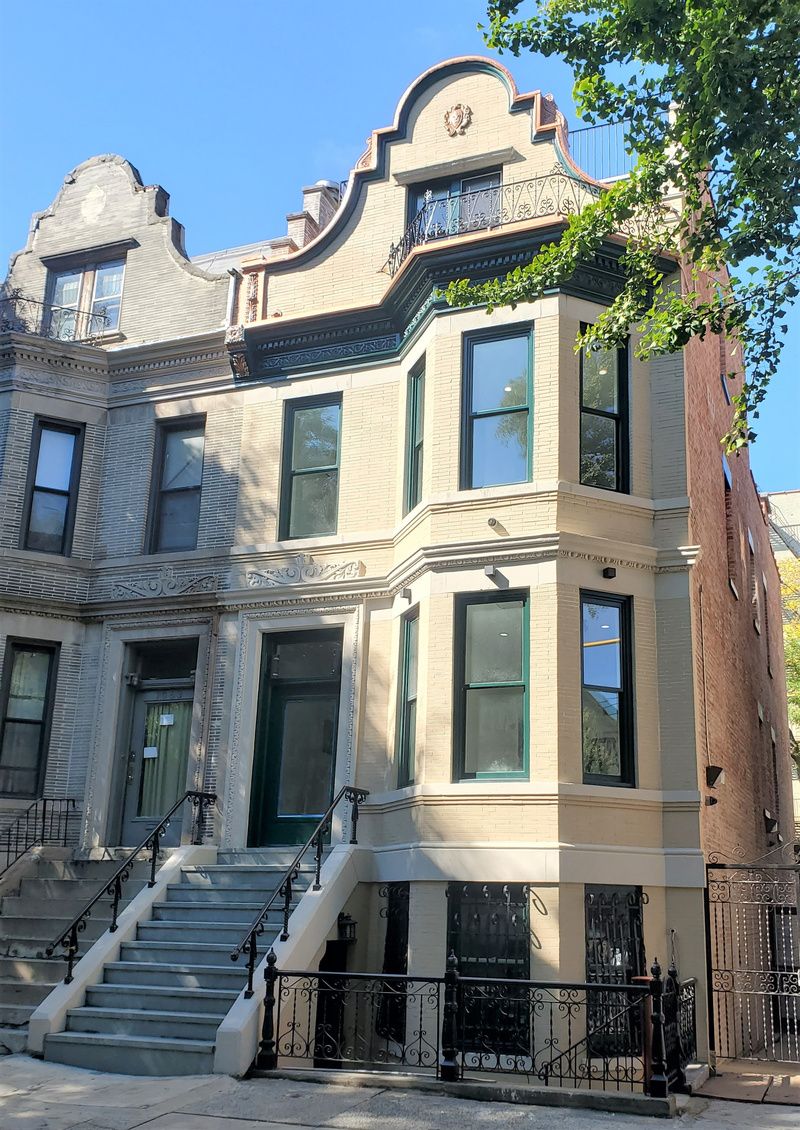
1065 Clay Avenue in the Bronx was once a vacant wreck. Now, the formerly abandoned residence has been transformed into a home by the current owners Ali and Farah Mozaffari. Located within the Clay Avenue Historic District, the Mozaffari’s home has become a beacon of renewal.
The three-story house, which is attached to a twin, boasts a Roman brick facade with prominent three-sided angled bays. There are Flemish-inspired gables at the roofline above the wrought-iron railings encircled balcony created by the bays. It is clear that much work and care has gone into the restoration of this historic home to bring it back to its former brilliance.
Next, check out The Oldest Buildings in New York’s Five Boroughs
Subscribe to our newsletter